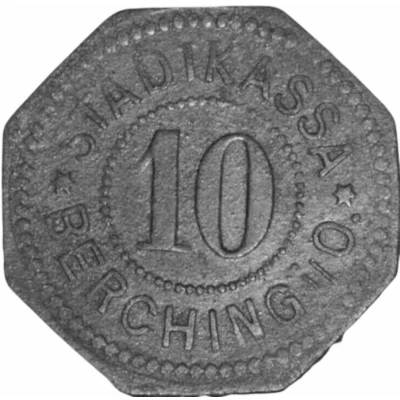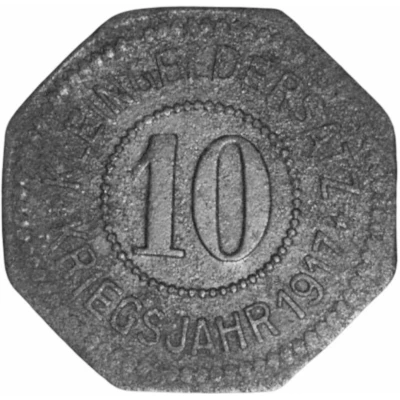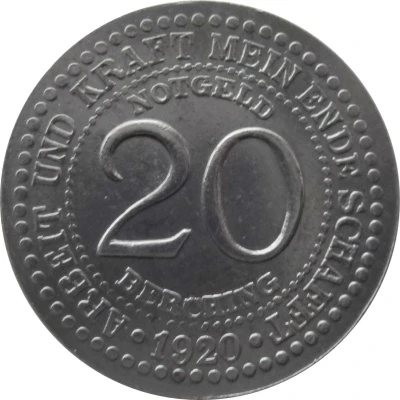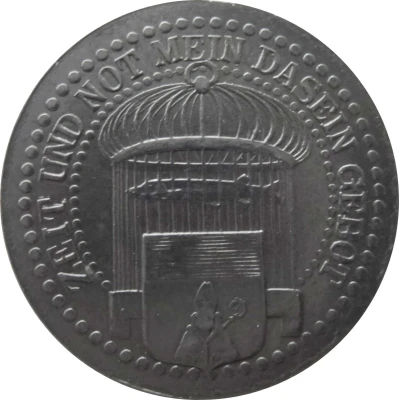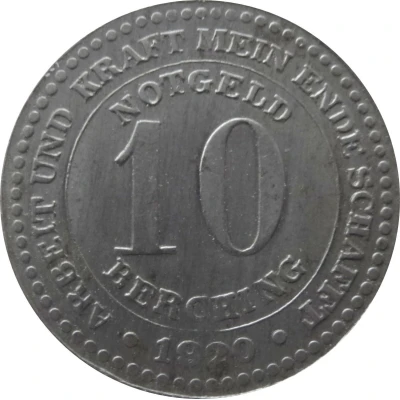
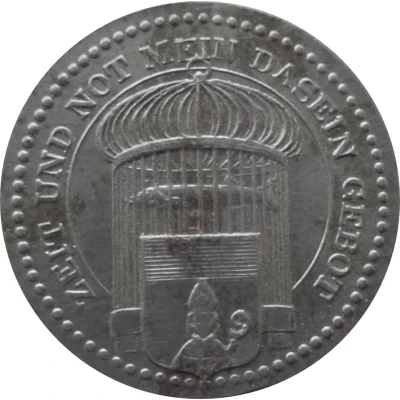

© Willem63 (CC BY-NC-SA)
10 Pfennigs - Berching
1920 year| Iron | 2.6 g | 20.1 mm |
| Issuer | City of Berching (Federal state of Bavaria) |
|---|---|
| Period | Weimar Republic (1918-1933) |
| Type | Standard circulation coin |
| Year | 1920 |
| Value | 10 Pfennigs (10 Pfennige) (0.10) |
| Currency | Mark (1914-1924) |
| Composition | Iron |
| Weight | 2.6 g |
| Diameter | 20.1 mm |
| Thickness | 1.2 mm |
| Shape | Round |
| Technique | Milled |
| Orientation | Medal alignment ↑↑ |
| Demonetized | Yes |
| Updated | 2024-10-04 |
| Numista | N#312922 |
|---|---|
| Rarity index | 92% |
Reverse
Pearl rim, legend surrounding solid circle, coat of arms in front of pike in a bird cage
Script: Latin
Lettering: ZEIT UND NOT MEIN DASEIN GEBOT
Edge
Plain
Comment
THE LEGEND OF THE BERCHING’S PIKE IN A BIRD CAGEA long time ago the Sulz was in full fl ood and the valley became a lake as far as Plankstetten. All fishes were very happy, but fl ods went out as quickly as they had come. A curious pike stood behind and remained all by itself in the meadows. A Berching’s inhabitant found it: as he had never seen such a strange animal before, he carried it to the town hall. There the question was discussed at length and in the end everybody agreed that it was a bird. And - just like a peculiar bird - the pike was put in a bird cage in
order to be admired by all the crowded people. As the pike opened its mouth for exhaling its last breathe the visitors from the neighbouring towns heard many Berching’s people saying: „Silence, it’s going to sing!“
The inhabitants of Berching led a very secluded life for a long time as the neighbours made fun of them everywhere they went, saying „Look at him, he’s a Berching’s pike!“
Interesting fact
The 10 Pfennigs - Berching 1920 coin from the City of Berching in Bavaria, Germany, is interesting because it was made of iron, which was a unusual material for coins at that time. Most coins were made of silver, gold, or copper, but the use of iron in this case was likely due to the scarcity of other metals during the post-World War I period. This coin is a unique example of how currency can reflect the economic and historical context in which it was created.
